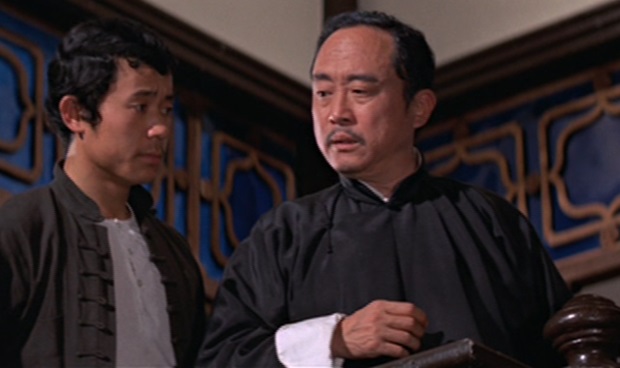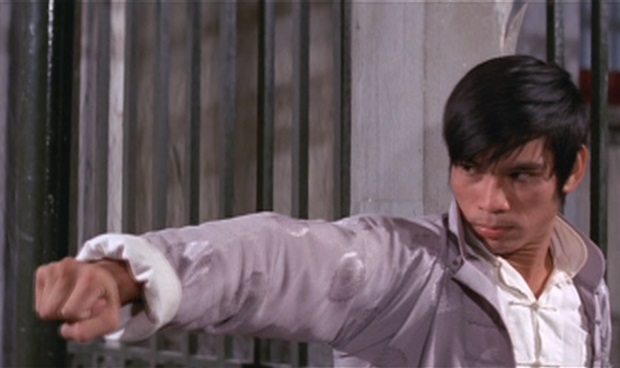The Boxer From Shantung: A Martial Arts Gangster Epic
Our odyssey through the history of martial arts cinema continues with a look back at a 70s classic: The Boxer From Shantung...
This article comes from Den of Geek UK.
If you grew up on martial arts movies in the ’80s, you’ll have rented a Shaw Brothers tape or two. In the UK, most of these came via Warner Brothers Home Video, who released big box rental versions with lush cover paintings of fists and kicks that enticed impressionable minds. Unusually though, they actually lived up to the cover art and you could depend on the brand. When you saw those iconic black cases, with their border banners of tiny kung fu poses, you knew you were in for a treat.
What few of us realized at the time was that we were barely scratching the surface of the Shaws. Not only were the international versions dubbed and scanned into unflattering fullscreen, but sometimes they were heavily censored or recut. As good as they seemed, they weren’t really what the filmmakers intended and, on top of that, the handful of releases we saw were just a fraction of the studio’s output. There were literally hundreds of other films that we could only dream about.
Since 2002, Celestial Pictures have been working hard on restoring the vast Shaws catalogue to its rightful glory and now, via the Celestial Pictures archive, many of them are available to watch instantly online. It offers a great opportunity for fans to explore the catalogue beyond the most famous ones like the 36th Chamber Trilogy, King Boxer (aka Five Fingers Of Death) or the Venom Mob movies.
One classic that falls far outside the usual kung fu template is The Boxer From Shantung (1972), a gangster film co-directed by Chang Cheh and Pao Hsueh-li, previously only available in the UK on a dubbed and cut VHS release from 1999. The film was released theatrically the same year as The Godfather and predates the similarly plotted Scarface by a decade but, most importantly, Boxer was a huge influence on the ‘heroic bloodshed’ genre of crime films that would reinvigorate Hong Kong cinema in the ’80s and ’90s.
Chen Kuan-Tai plays Ma Yongzheng, a country bumpkin who arrives in merciless 1930s Shanghai, looking for work. Although things start out rough, Ma’s extraordinary kung fu skills make an impression on local gang boss Tan Si (David Chiang) and his fortunes change. They strike up an instant friendship but Ma wants to prove himself worthy of this attention, rather than relying on handouts or easy options. He soon finds himself in charge of a small turf, which ruffles the feathers of sleazoid rival boss Yang (Chiang Nan), who vows to destroy Ma, Tan and anyone else who threatens his power.
The film plays out in the rags-to-riches style typical of crime drama but it’s not an entirely obvious trajectory. Rather than showing the way that power and money corrupt poor innocent Ma (ala Tony Montana), we see him genuinely demonstrate some honour among thieves on his rise to the top. He’s a quintessential Chang Cheh character; a stoic anti-hero who puts brotherhood and loyalty before common sense and self-preservation. While he’s frustrating at times, you’re always on his side because he’s basically a decent guy. As gangsters go.

The characterization here is well above average for the genre and serves as far more than just a bridge between fight scenes. The relationships are subtly drawn and the bleak world of Shanghai’s underworld is brought to life by the fabulous sets and costumes. The film is also rich with symbolism, with a recurring staircase motif to represent Ma’s rise and fall. It’s maybe overplayed at times (one scene in which a character remarks “Ma’s really going up the ladder now!” as he literally climbs a ladder should probably have been cut) but it comes to a satisfying conclusion in the film’s climax.
Without spoiling anything, it’s the climax that’s most fondly remembered in many fans’ eyes. Further encouraging comparisons to The Godfather, Boxer From Shantung goes for an operatic crescendo of ultraviolence for its last hurrah; a gore-soaked massacre that took 10 days to shoot and is one of the most astonishing sequences in the entire Shaw filmography. The way it’s shot is something to behold; a technically dazzling blend of choreography, stunts and high drama that keeps gruellingly building to a delirious finish.
Chen Kuan-Tai, in his first lead role, is an instant superstar. He’d worked as a stuntman before but Chang Cheh had a great eye for ‘unknowns’ (in defiance of the Shaws’ usual star system) and insisted on making him the lead. Kuan-Tai’s combination of abundant charisma and genuine kung fu skills (he was a former world champion) made this gamble pay off. His delivery of emotion is effective but his fight skills are off the scale. While monkey style was his speciality, he learned the challenging hung fist style from Lau Kar-Leung (who co-choreographed Boxer) and exhibits spectacular skill with it.

Kuan-Tai’s brutality doesn’t show off the graceful beauty and spiritual side of martial arts that, say, a lot of Kar-Leung’s own movies did. There are no thoughtful monks or Zenlike teachers to be found here. Kung fu is used by hardened criminals as a deadly weapon. In terms of delivering martial arts as sheer violence, Boxer From Shantung hits as hard as it comes.
The film was shot in under a month by its two directors. Pao Hsueh-li shot during the day and Chang Cheh through the night, with many of the cast working multiple shifts and hardly sleeping. Of particular interest is that the assistant directors holding it together were a pair of unproven youngsters – Godfrey Ho and John Woo. Both were new to the studio and would learn from this demanding shoot, eventually creating their own movie legacies (albeit at arguably different ends of the critical spectrum!).
Boxer From Shantung was an overnight sensation in Hong Kong, pushing Cheh’s career to the next level and launching Kuan-Tai as a bonafide property, but what’s more interesting is its lasting influence. It wasn’t anywhere near the first Hong Kong movie to deal with gangs or crime, but there was something about its particular approach that resonated, especially with its AD John Woo. He praised Cheh for “not only his depiction of violence onscreen but his incomparable way with emotions and chivalrous qualities” and admits the film was a key inspiration for his own classics. Indeed, swap the melee weapons in Boxer‘s final fight for guns and you’ve basically got The Killer (and that’s high praise indeed).
The heroic bloodshed genre kickstarted by Woo’s movies would feed directly into Quentin Tarantino’s career (Reservoir Dogs famously being a lift of Ringo Lam’s City On Fire) but its reach went even wider. From Woo’s own Hollywood films (Hard Target, Face/Off, Mission Impossible 2, etc) to The Matrix to Spider-Man to True Detective to any video game where a character slides down a corridor brandishing two guns, Woo’s influence on both eastern and western pop culture endures and those seeds were planted right here in The Boxer From Shantung.
The Shaws would produce a Corey Yuen-helmed remake in 1997 (Hero), which is no slouch either, but you just can’t beat the savage original. It’s a stunning film, a stark ode to the futility of male violence that stands out even in a strong catalogue, and is well worth checking out now that a good print is so easily available.